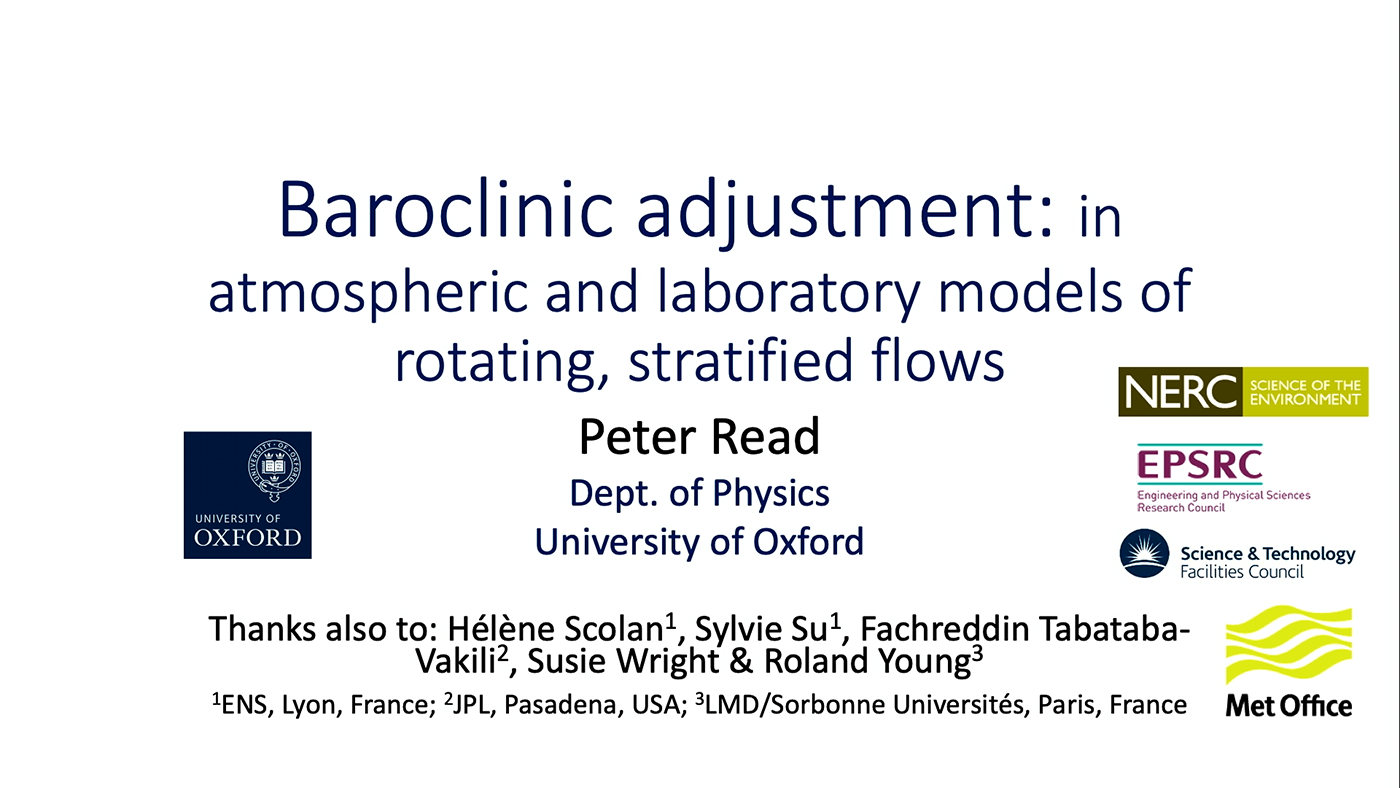'Baroclinic Adjustment Revisited: in Atmospheric and Laboratory Models of Rotating Stratified Flows' by Peter Read (Oxford)
Duration: 45 mins 1 sec
Share this media item:
Embed this media item:
Embed this media item:
About this item

| Description: | Talk given by Prof Peter Read (University of Oxford) at Department of Engineering, University of Cambridge, 17 May 2019, as part of the CUED Fluids seminar series. |
|---|
| Created: | 2019-07-11 12:15 |
|---|---|
| Collection: | Cambridge Engineering Dept Fluids Seminars |
| Publisher: | University of Cambridge |
| Copyright: | Prof Peter Read |
| Language: | eng (English) |
| Abstract: | It is 40 years now since the publication of a pioneering study by Peter Stone that proposed the hypothesis that baroclinic instabilities act to hold the Earth’s atmosphere close to a marginally unstable state as a form of self-organized criticality, thereby exerting control over the heat transport and thermal structure of the extratropical atmosphere. This is in contrast to the tropics, where the vertical lapse rate seems to be largely determined by (moist) convective adjustment. More recent studies, however, have questioned this approach, raising alternative impacts of equilibrating baroclinic eddies on nonlinear macroturbulent cascades and atmospheric stability, and the whole question of what determines the thermal structure of the mid-latitude atmosphere remains inadequately understood.
In this talk I will outline some ongoing new work in which we are attempting to address these issues (a) using laboratory experiments on rotating, stratified flows that combine regions of free convection with baroclinic instability, and (b) using highly simplified atmospheric circulation models with widely differing rotation rates. The results help to quantify some of the effects of both baroclinic and convective adjustment effects on large-scale circulation across wide ranges of parameter space, even without moist convection, indicating that baroclinic adjustment effects are particularly strong for Earth- and Mars-like planets. The implications for various planetary atmospheres will be discussed. |
|---|---|
Available Formats
| Format | Quality | Bitrate | Size | |||
|---|---|---|---|---|---|---|
| MPEG-4 Video | 1280x720 | 2.93 Mbits/sec | 991.32 MB | View | Download | |
| MPEG-4 Video | 640x360 | 1.71 Mbits/sec | 577.43 MB | View | Download | |
| WebM | 1280x720 | 3.18 Mbits/sec | 1.05 GB | View | Download | |
| WebM | 640x360 | 2.03 Mbits/sec | 687.53 MB | View | Download | |
| iPod Video | 480x360 | 524.44 kbits/sec | 172.92 MB | View | Download | |
| MP3 | 44100 Hz | 249.76 kbits/sec | 82.68 MB | Listen | Download | |
| Auto * | (Allows browser to choose a format it supports) | |||||

